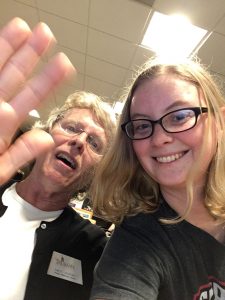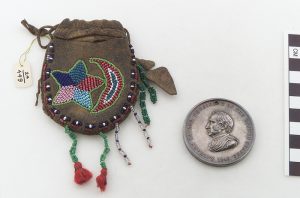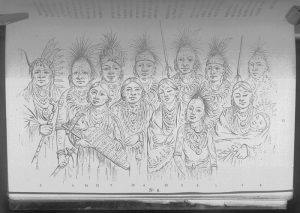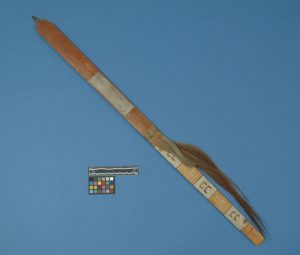The Ioway, Missouria, and Otoe tribes are descended from the Winnebago. The Winnebago are from the Northern United States, particularly the Great Lakes area. Many of the origin tales for this overarching tribe say that they worked their way down from the North, and as they traveled they ran into food shortages. When the shortage was particularly bad, certain groups within the larger tribe would split off and travel to a new area. This is what happened with the Ioway, Missouria, and Otoe. They left the Winnebago and the Great Lakes region and settled throughout current day Iowa, Missouri, and Illinois.
These three current day tribes had similar origins and subsequently similar origin tales. The tribes are said to be made up of clans such as the Bear, Beaver, Elk, Eagle (Thunderbird), Buffalo, Pigeon, and Owl. One of the websites that I looked at said that the Bear Clan is mostly made up of descendants of the Whitecloud family. Since many of the Ioway stories and artifacts that I have seen mention a Chief White Cloud, it is possible that the Ioway from our area are part of the Bear Clan. Additionally, it seems that most of the Whitecloud family settled in the Kansas Nebraska tribal lands.
There are many origin narratives for the Bear Clan with 12 different ones listed on one site. One of the most consistent parts of the tales is that the Bear Clan members actually started out as bears and were transformed into humans. They were/are also the soldiers of their people; they protected them and were policed the other tribes. Additionally, the Bear Clan is connected to the day and the earth. Elements such as colors (blue) and directions (north) are used in the stories to signify this connection. Some histories also say that they were leaders of the tribe or that they were secondary leaders after the Thunderbird Clan which was considered to be the most powerful.
Check out the links below to learn more about the Ioway’s cultural origins and read some of the stories.
https://www.legendsofamerica.com/ia-ioway/
http://hotcakencyclopedia.com/ho.IowayMissouriaOrigins.html
http://ioway.nativeweb.org/culture/clans.htm



